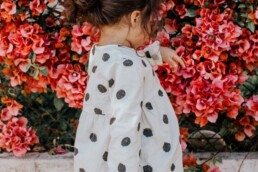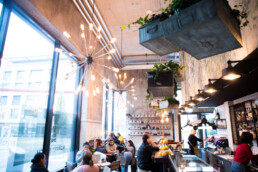Plastic Junk
Can the way we shop and what we buy for our children make a difference to our mental health?
We are continually being bombarded with issues around plastic waste and how it’s polluting our planet. On the other hand, we are also all becoming more aware of our mental health and the effect of things such as clutter and mess on mental wellbeing. I’m sure that we are all doing our part- we are not using single use plastic bags anymore, we are recycling our household plastic, we only eat dolphins friendly Tuna and use recycled toilet paper etc. but the question is could we do more? Can our parenting habits, the way we shop, and what we buy for our children make a difference? This sounds like quite a grandiose statement doesn’t it, but think back to when we were children 30, 40 (50?) years ago. We just had less stuff! The contents of a child’s bedroom in the 1980’s probably consisted of a yo yo, a few Lego bricks, a Rubics cube a geometry set, and an Etch a Sketch (if you were lucky!)
〰
But this is not a discussion about the amount of money that parents are now spending on the kids i.e. on technology devices and toys etc. In actual fact one might argue that it makes more sense to buy these high ticket high-value items for our children, rather than all the nonsense trinkets and collectables. There is just so much junk these days, which is actually quite at odds with the current designs of technology items which are generally sleek, uncluttered, and beautiful in their simplicity (can you tell I’m writing this on an Apple product).
So, what exactly is this junk that is so bothersome and where is it all coming from? Part of the reason is that we live in an ever more disposable world where we buy items for single use or single wear, and this has translated over to things such as Happy Meal toys, arcade gifts, film and music merchandise. Even a cultural visit to the museum often results in the compulsory stop in the gift shop to pick up a useless keyring or badge almost as some physical evidence of ever having been to the museum of natural history. As though bringing home this dinosaur eraser will bring back a flood of warm memories of the great times you had at the museum. Well guess what? Once these items get home they just get thrown into a corner, one more item to be added to the junk mountain gradually building around your house.
No parent relishes the ultimate decision of whether to keep or to throw away an item which although seem totally innocuous to us, will inevitably hold some profound meaning to the offspring!
These items come from so many different places, arts and crafts items from church or fetes, school friends’ birthday party bags, key rings from the dentist, pens and fridge magnets from the annual conferences (why do we love free stuff so much?). Our hoarding habits as adults probably don’t help either!
But maybe we should become more cognisant of the effect that our habits are having on junk and clutter in our houses. We can agree that enough is enough! We won’t buy the supermarket products which offer a free toy as an incentive, we won’t support our children’s’ collection of a useless cereal brand’s toy mascot, we stop buying into each year’s craze (I still don’t know what the purpose of a finger spinner is).
〰
Conscious Consumption
But we don’t want this to sound like we are being overly harsh on our kids and that we don’t want them to have anything fun. To the contrary. As was alluded to earlier, it should not be quantity that matters but quality. Would a fair trade off for not cluttering the house with the above-mentioned nonsense be a more significant present? Think back to 1980’s again when your main present might have been a bike, a pair of roller skates, a chemistry set, maybe a games console. All the dinosaur erasers and happy meal toys in the world couldn’t compare to the joy felt in receiving these significant gifts!
These days a significant present may take the form of a tablet, a smart phone, a laptop or an Xbox (how times have changed). But this opens up another discussion. What do you get the child who already has everything?
There has been a movement over the last few years away from the spending money in the owning of things (flash cars, fancy houses, jewellery, expensive clothes) towards experiencing things. For the ultra-rich, this has normally meant the type of things that they could boast that their friends have never done- dinner at sunset in the dunes of the desert, bunji jumping off the Sydney opera house, being a passenger on the first commercial flight to space etc.
Whilst these aren’t the sort of experiences that your little angels are necessarily going to expect (unless your surname is Branson, Gates or Musk), the concept should remain the same for the rest of us mere mortals. Should we not be teaching our children about the value of experiences? How many times have you looked back at an old photo and you are immediately transferred back to the time and place? That photo is far more potent than any collectables you may have saved. I’m sure we’ve all taken home a pebble or a shell from a wonderful beach trip we had. If I’m to be honest, I couldn’t tell you anything about that holiday experience from looking at that pebble, but we kid ourselves that they will forever remind us of good times when we bring them home with us when in fact they will at best probably be thrown in the trash, and at worst add to your daily stress in additional clutter around your house.
At some point we just need to agree to do better by our budgets and our planet. We can educate our kids about the danger of waste and how to be more circumspect in terms of what they buy or bring home. This message needs to be echoed in schools, churches and social events. We can all do better than this. For the most part we still have the ability to shape our children’s future. Let’s not miss up on an opportunity to do better for them.



